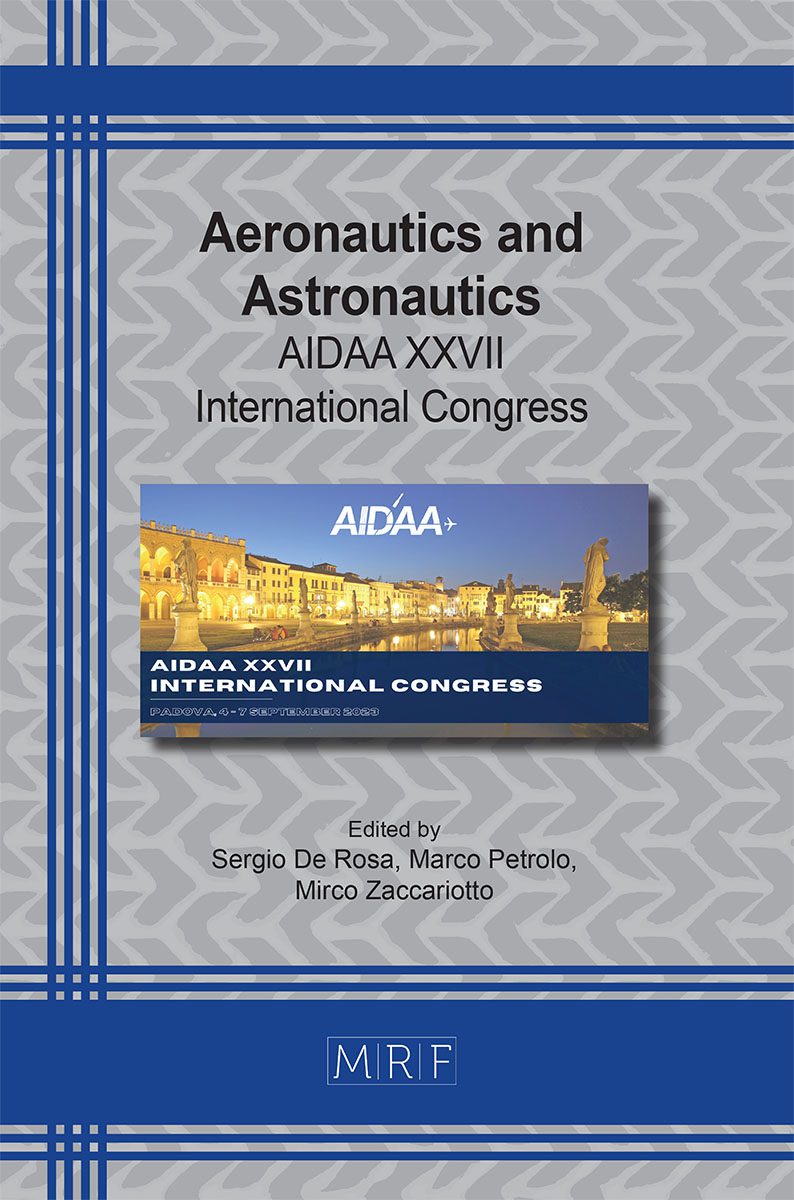Comparative study of shock response synthesis techniques for aerospace applications
Ada Ranieri, Simone De Carolis, Giuseppe Carbone, Michele Dassisti, Andrea De Cesaris, Leonardo Soria
download PDFAbstract. The Shock Response Spectrum (SRS) is a widely used tool for analyzing and characterizing the response of mechanical systems to shock and transient events. In the aerospace industry, the SRS is used to compute the severity of the shock event on the electrical and optical equipment of a spacecraft. However, the SRS only provides magnitude information and does not retain temporal or phase information. Moving to the time domain is not a straightforward process because a time history has a unique SRS, but the converse is not true. Therefore, it is challenging to find the right time history that reproduces an SRS when simulating a given input profile using pyrotechnic devices or when computing the response to a shock input profile in the time-domain. For a given SRS an infinite combination of time pulses is possible. Synthesizing an SRS involves recovering a time-domain pulse that can accurately replicate the given SRS. There are many methods which are already widely utilized in the aerospace industry, including the use of damped sinusoids, enveloped sinusoids and wavelets. In this paper we compare different techniques, with the objective of identifying the most suitable method based on the considered frequency range and type of impulse. The case study under consideration is an SRS input profile corresponding to a real industrial case. Three artificial SRS accelerations have been generated to replicate the input, and the percentage errors of each method in comparison to the reference signal have been assessed. Further development will involve the use of optimization algorithms to generate the SRS profile with the smallest possible error.
Keywords
Shock Response Spectrum, Synthesis, Wavelets, Damped Sinusoids, Enveloped Sinusoids
Published online 11/1/2023, 4 pages
Copyright © 2023 by the author(s)
Published under license by Materials Research Forum LLC., Millersville PA, USA
Citation: Ada Ranieri, Simone De Carolis, Giuseppe Carbone, Michele Dassisti, Andrea De Cesaris, Leonardo Soria, Comparative study of shock response synthesis techniques for aerospace applications, Materials Research Proceedings, Vol. 37, pp 744-747, 2023
DOI: https://doi.org/10.21741/9781644902813-159
The article was published as article 159 of the book Aeronautics and Astronautics
![]() Content from this work may be used under the terms of the Creative Commons Attribution 3.0 license. Any further distribution of this work must maintain attribution to the author(s) and the title of the work, journal citation and DOI.
Content from this work may be used under the terms of the Creative Commons Attribution 3.0 license. Any further distribution of this work must maintain attribution to the author(s) and the title of the work, journal citation and DOI.
References
[1] T. Irvine, Shock Response Spectrum Synthesis Via Damped Sinusoids, Vibrationdata, 2012
[3] J. E. Alexander, A New Method to Synthesize an SRS Compatible Base Acceleration with Energy and Temporal Moments to Improve MDOF System Response, IMAC 36 Orlando, 7 Sound & Vibration, 2018.
[2] T. Irvine, Shock Response Spectrum Synthesis Via Wavelets, Vibrationdata, 2000.
[4] A. Grasps, An Introduction to Wavelets, IEEE Computational Science and Engineering vol. 2, num. 2, published by the IEEE Computer Society, Los Alamitos, 1995. https://doi.org/10.1109/99.388960
[5] R.G. Allemang, Vibrations: Experimental Modal Analysis, 1999. UC-SDRL-CN-20-263-662












